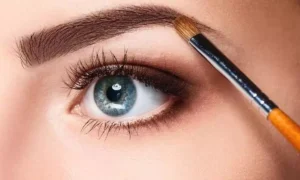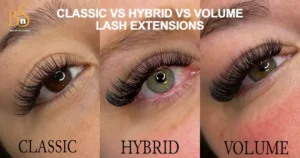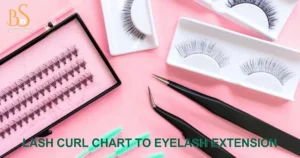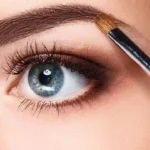Lipstick is one of the most commonly used cosmetics items to enhance beauty. But do you know what lipstick is made of? This article will explore the main lipstick ingredients and provide insight into what gives lipstick its color, texture, and longevity on the lips.
Common Lipstick Ingredients
The primary ingredients in lipstick are:
- Oils: Lipsticks contain plant-based oils like coconut, olive, palm, or jojoba oil which hydrate and moisturize lips.
- Waxes: Waxes like beeswax, carnauba wax, candelilla wax, ozokerite, or ceresin work as binding agents and give lipstick its creamy texture.
- Pigments: Iron oxides, carmine/cochineal (derived from crushed insects), and titanium dioxide are commonly used pigments to provide a wide range of colors.
- Preservatives: Preservatives like phenoxyethanol help prevent lipstick from spoiling and protect against mold growth.
Additional minor ingredients may include emollients, vitamins, essential oils, and herbal extracts for their beneficial properties. The specific formulas vary between brands.
Beeswax is one of the most prominent waxes in lipstick. It is a natural wax secreted by honeybees and has moisturizing properties. Beeswax forms a protective film on lips that seals in hydration. It also enhances the pigmentation of color and gives lipstick its smooth, emollient texture.
Carnauba wax is a hard, glossy wax obtained from the leaves of the carnauba palm. It is valued for its high melting point and shiny finish. Carnauba wax creates a long-lasting color that does not feather or bleed outside lip lines. It allows pigment to stay intact on lips throughout the day.
Read also more and get information: Blush and Highlighter
Harmful Ingredients
While most ingredients are generally recognized as safe, some may be hazardous in large amounts or to sensitive individuals. Ingredients to watch out for include:
- Lead and other heavy metals: Often found as contaminants in pigments like chromium oxide green and iron oxide red.
- Formaldehyde: Used as a preservative but is a possible carcinogen according to the EPA.
- Coal tar dyes: Associated with cancer and hormone disruption. Avoid lipsticks with FD&C dyes.
What Is Natural Lipstick Made Of?
Natural or organic lipsticks contain ingredients sourced from plants and minerals without hazardous chemicals. Common natural ingredients include:
- Beeswax, Candelilla wax, Carnauba wax: Provide texture from botanical waxes.
- Oils: Jojoba, olive, coconut, avocado, or argan oils for moisture.
- Butters: Shea, mango or cocoa butter have emollient properties.
- Pigments: Iron oxides, carmine, annatto, paprika, hibiscus, or carrot offer vibrant hues.
- Herb & flower extracts: Calendula, rosehip, and chamomile soothe and condition lips.
Does Your Lipstick Contain Whale Vomit?
You may be surprised to find out that some lipsticks contain an ingredient called “ambergris”, which comes from whale vomit or feces.
Ambergris forms in the digestive system of sperm whales as a protective coating for sharp fish bones and squid beaks ingested. After years of processing in the whale, solid ambergris floats ashore.
This waxy substance has a musky scent highly valued in the fragrance industry. It allows fragrances to last longer on the skin.
Paraben Controversy
Parabens are common preservatives in cosmetics due to their efficacy and low cost. However, concerns have been raised about their safety.
Parabens have estrogenic effects that may disrupt hormones according to some research. trace amounts have even been detected in breast tumors.
However, other studies found no direct link to cancers. Health agencies still consider parabens safe at current exposure levels.
To ease safety worries, many brands replaced parabens with alternatives like phenoxyethanol or opted for paraben-free preservative blends. Making an informed choice allows finding options in agreeance with your concerns.
Glossary
Pigments: Coloring compounds that give shades to lipstick through small particulate matter.
Binders: Materials like waxes that hold together other ingredients into a smooth texture.
Emollients: Oils and butter that soften and hydrate the lips.
Preservatives: Chemicals inhibiting bacteria/fungus growth in the tube over months of use.
Film formers: Ingredients create a protective layer over lips enduring throughout the day.
Opacity: The ability of a color to hide the natural lip shade fully in one layer.
Pretty Colors
Nature provided the earliest pigments through crushed flowers, berries, minerals, and more. Modern lipsticks benefit from stable, vibrant synthetic and natural dyes too. Some common sources:
- Red 3 or Carminic Acid (carmine) – Cochineal insect shells
- Red 27/40 – Safflower, poppy, red cabbage or carrots
- Red 7 – Synthetic D and C Red No.7
- Yellow 5 – Tartrazine, often made from coal tar
- Black/Brown Iron Oxides – Rust and clay
- Titanium Dioxide – Vegetable-derived white pigment
Frequently Asked Questions
Is lipstick non veg?
Lipstick can contain carmine/cochineal extract which is made from crushed insects. However, many brands offer vegan formulas using alternatives like beetroot juice. Always check ingredients for animal-derived components.
Is lipstick made out of plastic?
No, while some ingredients like film formers have plastic-like qualities, the main constituents are waxes, oils, and pigments. Plasticizers may be used but in very small amounts to smooth textures.
What is lipstick made of whale sperm?
Some high-end fragranced lipsticks historically contained ambergris, a waxy substance from whale digestion tracts. Most companies now avoid this controversial ingredient for environmental and ethical reasons.
What are the main chemicals in lipstick?
Common chemicals are preservatives like phenoxyethanol, plasticizers like cetyl phosphate, and pigments such as iron oxides, carmine, and FD&C dyes. However, the specific formula varies significantly between natural and conventional lipsticks.
Final Thoughts
Lipstick boasts a rich history and formula innovation and remains one of the most iconic makeup items. But what goes on our lips deserves full transparency on sourcing.
Considering natural or organic options reduces potential chemical exposures, especially for pregnant/nursing women or those with sensitivities. Brand values matter too cruelty-free status helps lipstick stay pretty guilt-free.
With knowledgeable choices, we can indulge our love of color while safeguarding our health. A dab of joy every day makes doing our makeup well worth getting to the bottom of what makes lipstick tick.

A seasoned beauty enthusiast, Rachel James has honed her craft in beauty style innovation over 7 years, blending artistry with precision to redefine beauty allure.











